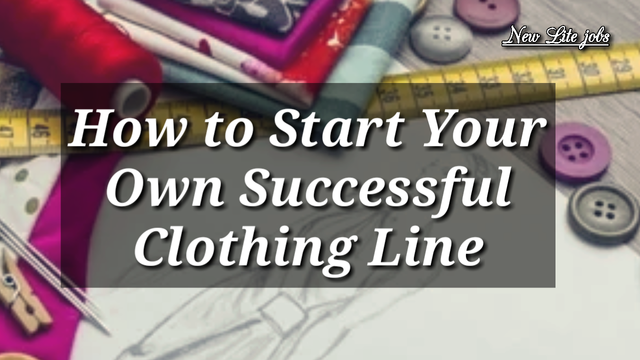Tips for starting a clothing line
Sheeler offered the following basic tips for anyone looking to launch their own clothing brand:
- Start with fashion expertise.
This is critical because you need to have the industry and business knowledge before developing your clothing line. The No. 1 priority should be developing your concepts and ideas.

- Think ahead to sales.
Will you have e-commerce on your website, or a storefront, or will you wholesale? Make sure you know your pricing structure as well.
"Decide your terms with the manufacturers and that will help to solidify your overall pricing structure. Typically, your overall price incorporates your sample price, the costs that you incur to design the dress, the wholesale cost and other factors," Sheeler said. "Take the time to decide what you will pay the manufacturer for a particular item and factor in the various costs into your pricing mix."
- Cost of starting a clothing line.
Without business experience, the process of securing funding can be daunting. There are several ways to secure startup funds for a clothing line, such as taking out a loan if you have a set plan for growth, storefronts, etc., according to Sheeler.
"If that doesn't make sense, handling costs on a credit card is a popular option as well," Sheeler said. "This is sometimes a good solution for businesses that are seasonal and rely on their cash flow during a set timeframe each year."
In a previous Business News Daily interview, Matthew Johnson, owner and designer at Seventh.Ink, said that he ended up doing preorder designs once he got the hang of the business as a way to pay up front for production. From there, he was able to get an idea of what was selling and what customers wanted.
Setting up your business plan
Each new business should have a business plan to get investors and funding. While there are basic sections of a business plan no matter the industry, there are elements of the fashion industry that can impact the way a business plan is written.
"The difference in a business plan for a clothing line is that a solid expertise in the fashion industry is critical," said Sheeler. "Understanding the competition, the market and how you will make money is critical."
Find a manufacturer
Manufacturing is a key part of so many other steps to starting a clothing line. Dig deep to determine where you want to manufacture your items and get references for potential manufacturers. [Read related article: How to Find a Factory to Manufacture Your Products]
"First, start researching for reputable manufacturing through your network of industry connections," Sheeler explained. "Working with a consultant who has connections in various locations is recommended as well to ensure that you work with a reputable manufacturer."
You also need to decide whether you want to source domestically or internationally, and this can be based on the materials you want to use and pricing.
"The process of finding a manufacturer definitely requires a significant amount of legwork, research and interviewing," Sheeler added.
Hiring help
As a small business, hiring for certain tasks and departments can run you a pretty penny. That's why Sheeler says that the business owner needs to know how to do the grading and fitting, and also be the technical designer.
"You are the one to decide whether you are going to use an agent or go direct to manufacturers, or do private labeling with your clothing line," Sheeler said.
Sheeler added that clothing brand owners should look for the following roles when hiring:
Branding. Overall branding is very important to ensure that your logo, website and marketing materials are consistent and embody the essence of your brand. Without marketing, your customers can't find out about you, and should be a mix of strategic advertising, public relations, social media, events and more.
Accountant. Your business cannot survive without a finance person. If you are really good at clothing and highly creative, you probably aren't good at the "money" side.
Product manager. This person will help with manufacturing – line sheets, filing, POs, delivery dates and managing the overall flow of the creation and distribution of your line.
"Designing a clothing line is tremendously rewarding, especially when you see your designs on people walking down the street or … on Instagram," said Sheeler. "But remember, starting a line is not just making a dress. Be prepared for scenarios like manufacturing glitches and delivery delays, especially if you design seasonal clothing."